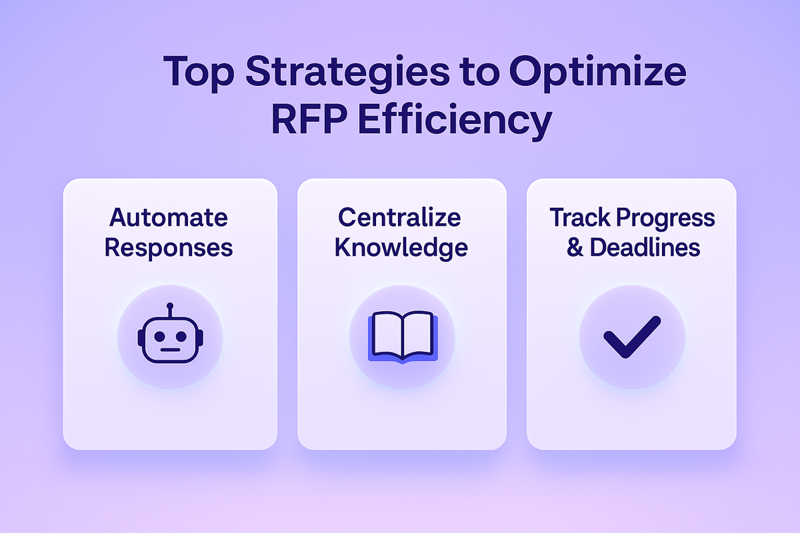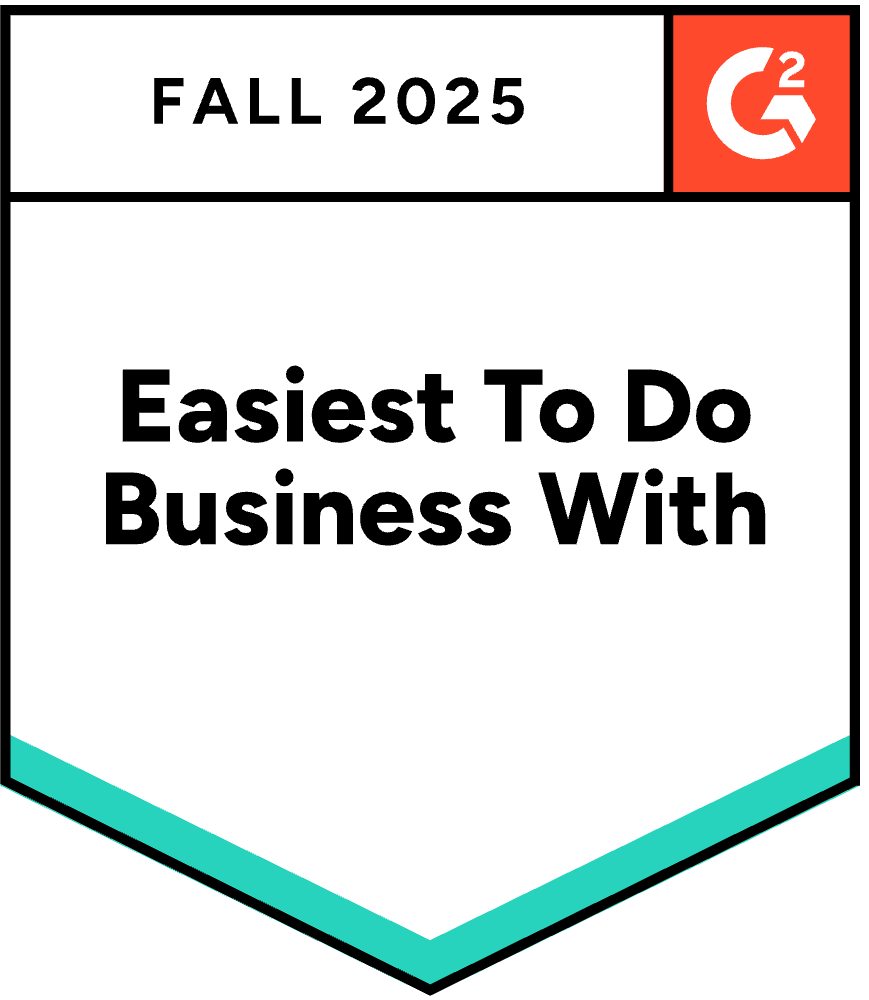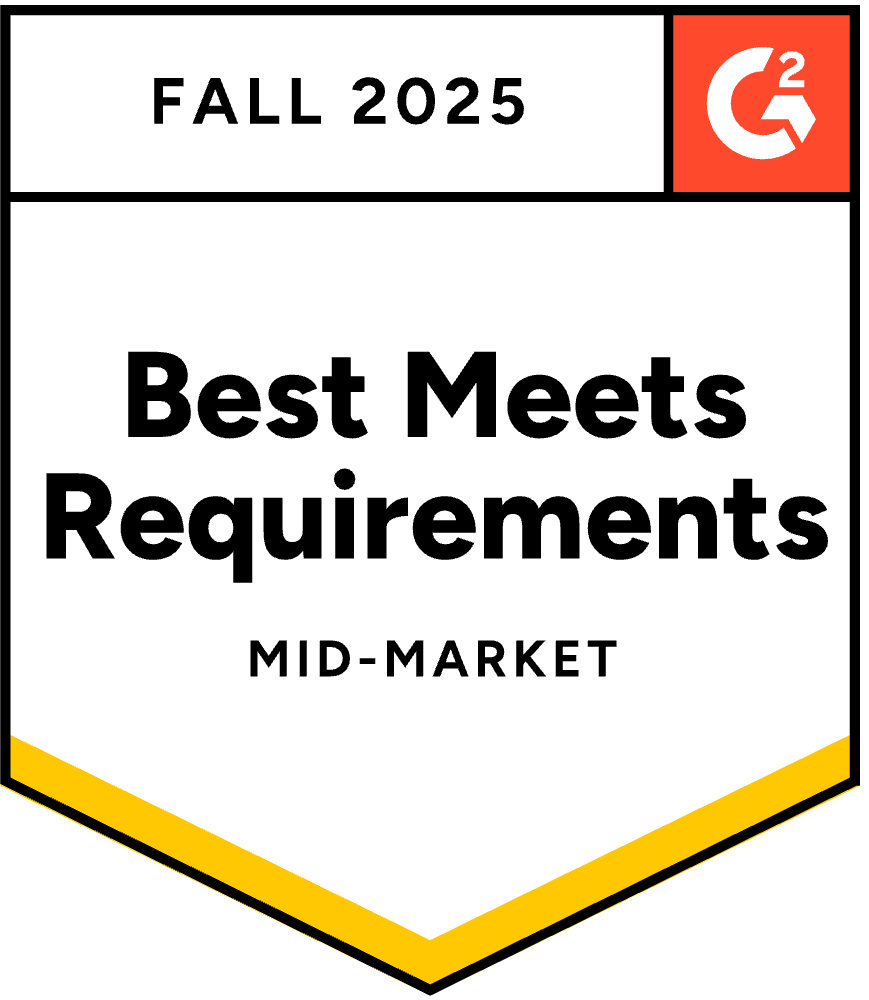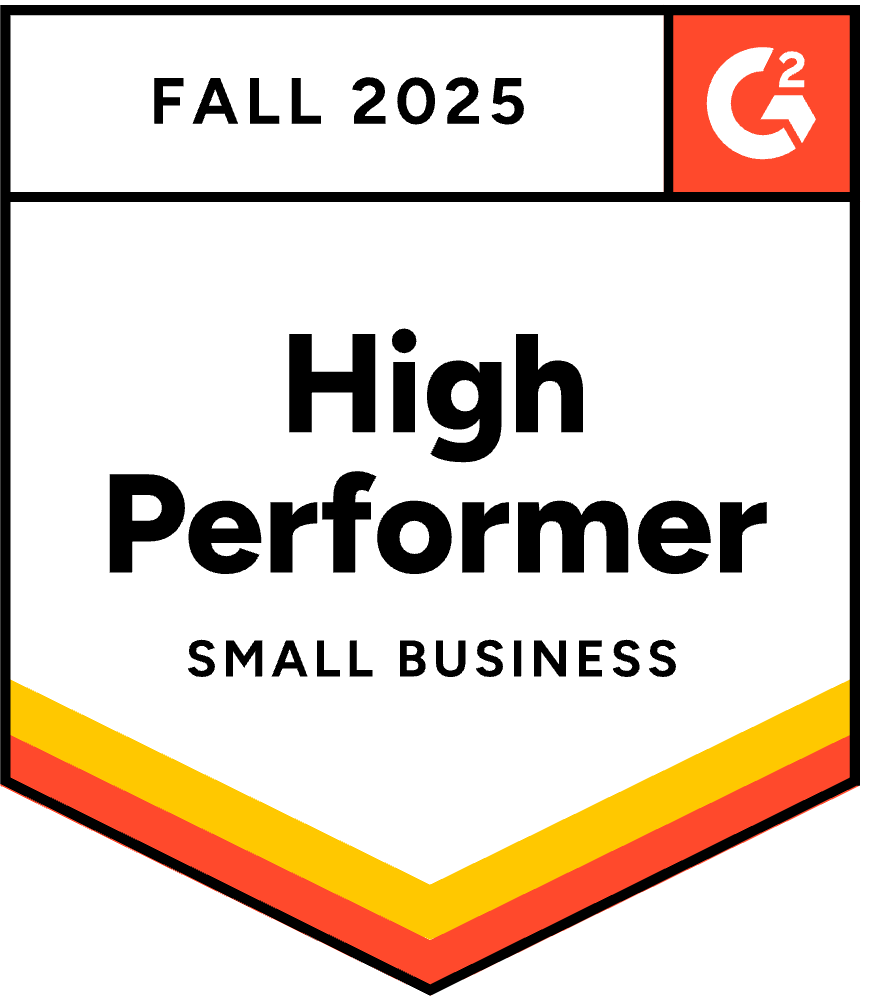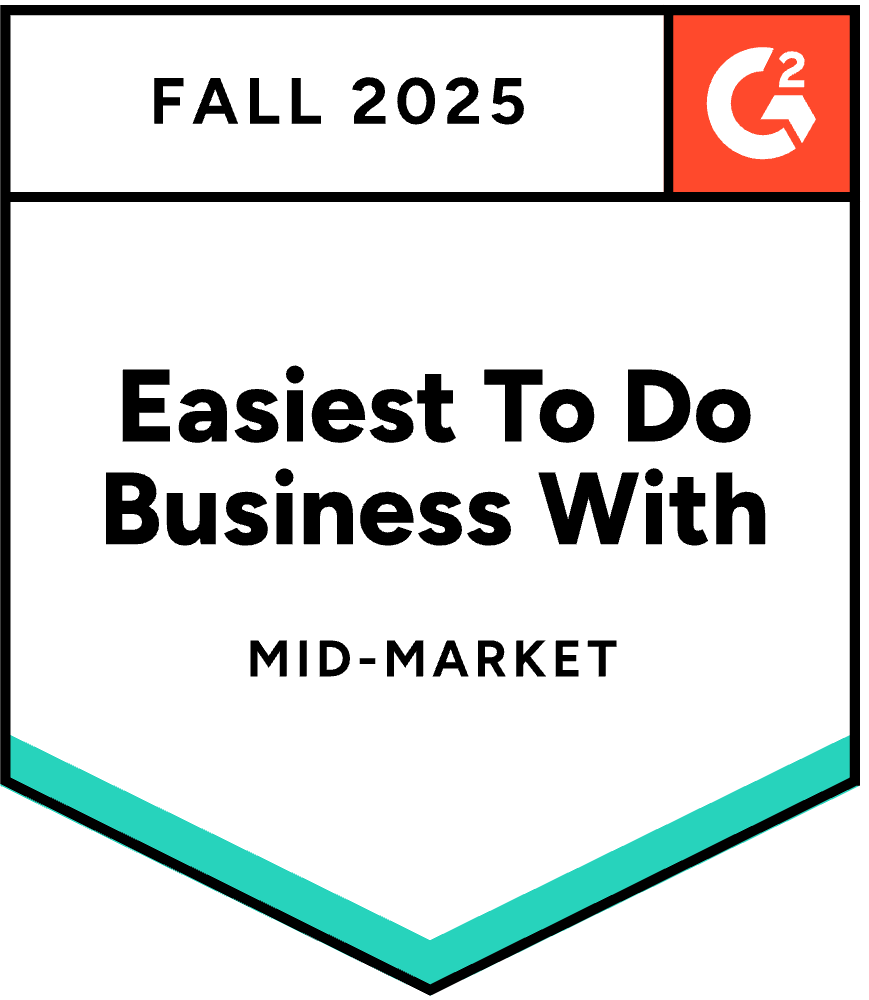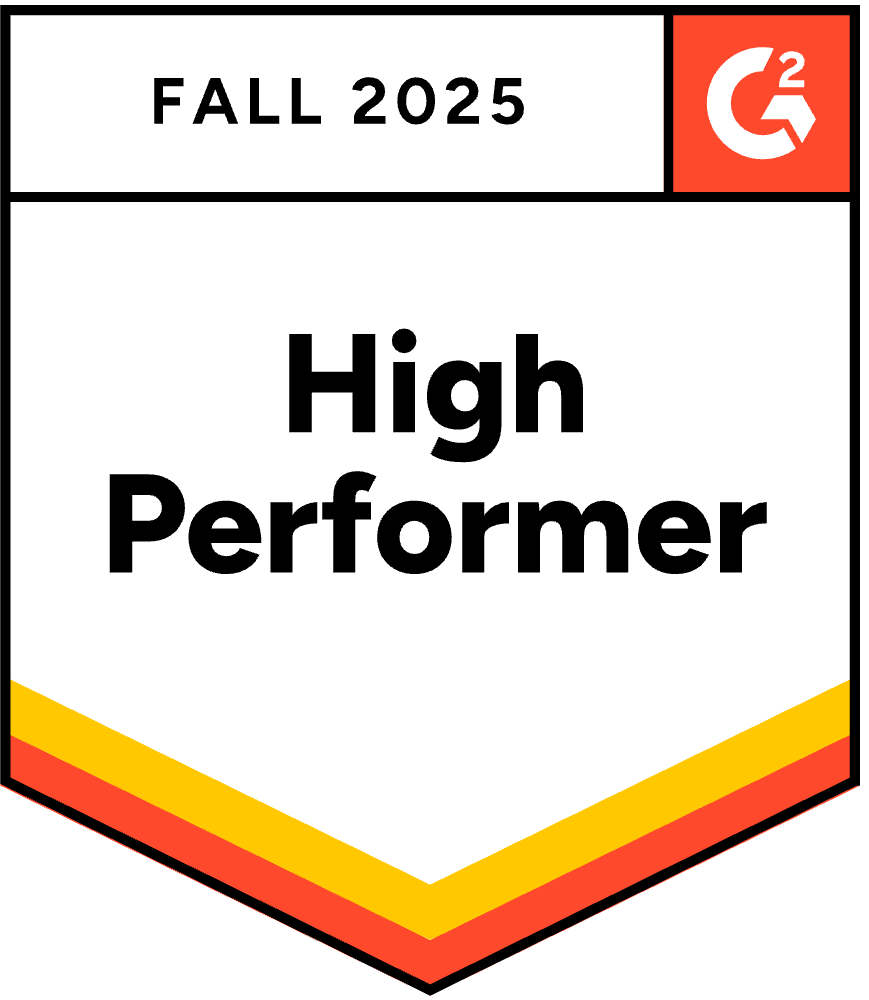B2B RFP Process: Essentials & Best Practices
August 16, 2025
By
Evie Secilmis
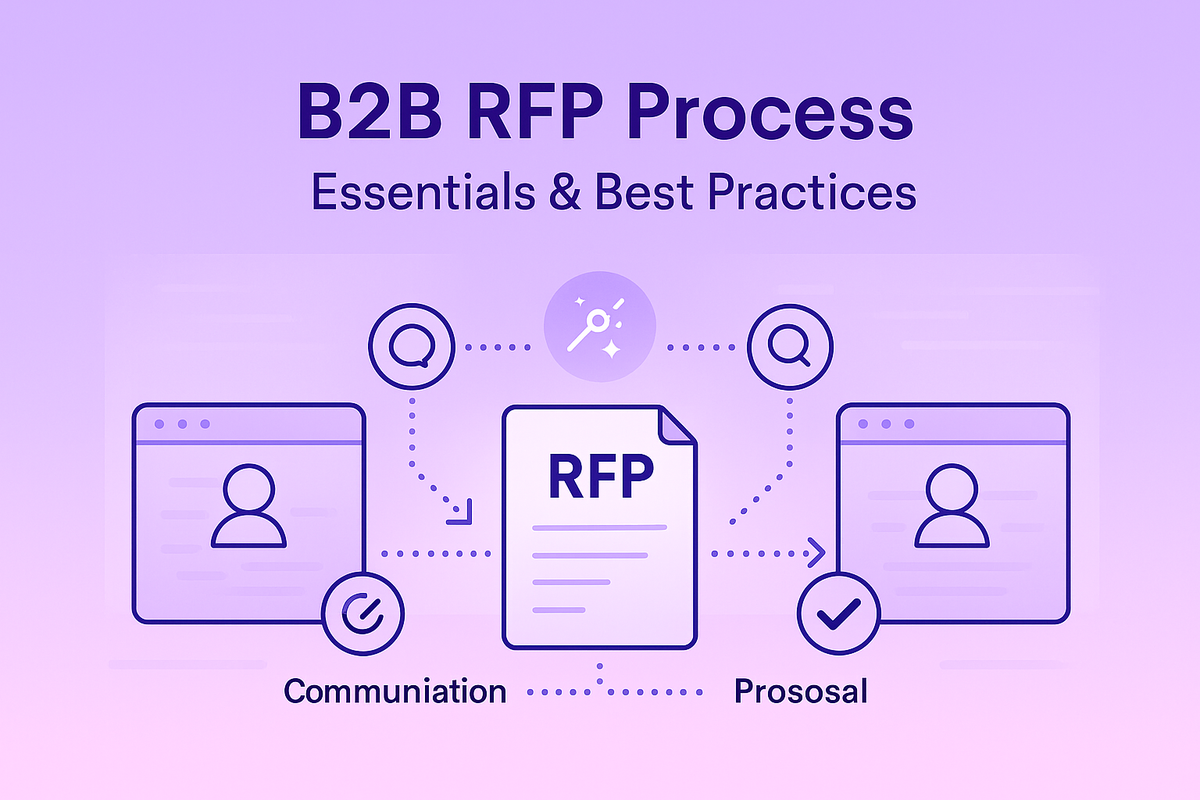
B2B RFP Process: Essentials & Best Practices (2025 Guide)
Deadlines sneak up, SMEs are slammed, and teams hunt through old folders for answers they’ve written a dozen times. When you build a streamlined RFP process, you swap chaos for control—faster cycles, better proposals, and stronger win rates.
What is a B2B RFP?
A B2B Request for Proposal is your formal way to invite vendors to compete by outlining your project goals, requirements, and selection criteria. If you’re just getting started, we recommend reading What Is an RFP? How to Respond Efficiently with AI-Powered Automation for a fuller picture.
Why the RFP process matters
- Competitive value — Multiple bids help you compare cost, service and fit objectively.
- Transparency & fairness — Clear rules and consistent criteria build trust and protect your decision-making.
- Better decisions with less risk — When every vendor answers the same questions, you evaluate on value, not guesswork.
The RFP lifecycle: From need to payout
- Pre-RFP analysis — Define objectives, budget, timeline, and internal alignment.
- Drafting the RFP — Write a clear, structured document with scope, submission guidelines and evaluation criteria.
- Distribution — Share the RFP with shortlisted vendors and manage Q&A within a controlled platform.
- Evaluation — Score submissions against a weighted rubric and filter for best-fit.
- Shortlist & validate — Demo, check references, validate claims and commercial terms.
- Negotiation & award — Finalise contract terms, expectations and success metrics.
- Onboard & monitor — Set governance, track milestones, and ensure vendor delivery.
Typical timing: 4–8 weeks. Most delays are caused by internal misalignment and manual bottlenecks—not by the technology. For more on tech impact, see 10 Features to Look for in RFP Software.
What strong RFPs include
- Company overview & project purpose
- Clear scope & deliverables
- Mandatory security/compliance requirements
- Submission format & timeline
- Transparent evaluation criteria with weights
- Commercial, legal and contract terms
Build an effective evaluation model
Before you send your RFP, agree on a rubric.
Example weights:
Business fit (30%) • Technical/security fit (25%) • Onboarding/service (15%) • Total cost of ownership (20%) • References/risk (10%)
Want more? Check out How to Build an Effective RFP Scoring System.
Timelines that work in real life
- Week 0–1: Stakeholder alignment & rubric
- Week 2: RFP draft + release
- Week 3–4: Vendor responses
- Week 5: Shortlist & demos
- Week 6: Negotiation & award
If time is tight, split into Phase 1 essentials and Phase 2 deep dive—see Top 5 RFP Tools to Streamline Your Workflow for more workflow ideas.
Write clearer, more actionable RFPs
- Ask for measurable responses (e.g., “What is your average response time ? a) <1h b) 1-4h c) 4-8h”).
- Provide a budget range + breakdown to filter out poor fits.
- Include workflows / diagrams so vendors don’t guess your environment.
For vendors & SEs: A response playbook
1) Make a legit go/no-go decision
Focus on fit, capacity & win potential. Explore decision criteria in What is an RFP?.
2) Project-plan the submission
Assign an owner, set milestones, run a kickoff and map dependencies.
3) Write for the buyer
Highlight outcomes, not features. Tailor to buyer needs. Find examples in What Most RFP Response Workflows Get Wrong.
4) Retro & build your knowledge base
Every response should feed your content library. Use the Iris Knowledge Map to centralise best answers.
Modern operations: content libraries, SMEs & AI
- Reusable content library – Houses approved templates, FAQs, security answers and case studies.
- SME time is precious – Pre-approved content gives them less admin burden; they validate, you build.
- AI-first workflow – Generate first drafts, keep humans for strategy. Read more in Why AI-First RFP Tools Beat Template-Based Platforms.
Beyond submission: diligence, negotiation & onboarding
- Shortlist top vendors, run demos, validate references and negotiate terms.
- Ensure you have follow-up governance: SLA tracking, milestone reviews, post-award evaluation.
- Teams using robust workflows reduce SME time by 50%+—a big productivity win (see Why Your RFP Process Loses You Deals).
Common problems & how to fix them
- Too tight deadlines → Break into phases; use automation to bootstrap drafts.
- Vague or biased RFPs → Use Q&A to clarify or propose outcome-based questions.
- Volume overload → Pre-screen and enforce go/no-go decision rules.
- Chaos of content → Adopt structured libraries and governance (see Knowledge Map link above).
- Overworked SMEs → Lean on AI for the bulk; SMEs handle nuance.
Responsible procurement & ESG
Expect to field questions on environmental impact, labor practices, diversity, and data ethics. Scalable response requires pre-approved statements and a content library ready for these topics.
Metrics that matter
Track: cycle time per stage • win rates by segment • content reuse • SME hours per RFP • cost per submission. Arm your team with insight—start with the analytics featured in 10 Features to Look for in RFP Software.
Action checklist
- Define clear objectives and a weighted rubric
- Use a consistent RFP template & submission format
- Centralise content + owners + review cadence
- Use automation (via Iris) for first drafts; focus your team on tailoring
- Run demos, finalize terms, kick off with a 30-60-90 plan
- Conduct post-award retro and update your library
FAQ
What’s the biggest one-change fix?
Implement a structured go/no-go decision before any proposal effort.
Does sharing a budget hurt us?
Not if you pair it with a breakdown & scope; this filters out misfits.
Small team with high volume?
Templates + library + AI-assisted drafting = manageable flow.
How to handle non-winning vendors respectfully?
Be specific, tie feedback to criteria, maintain goodwill.
(See guidance in Why Your RFP Process Loses You Deals.)
Treat your RFP process like a product—define, measure, refine. With clear goals, a living content system, and smart automation, you convert RFPs into a growth engine.
Ready to level up? Book a Demo!
Share this post
Link copied!




